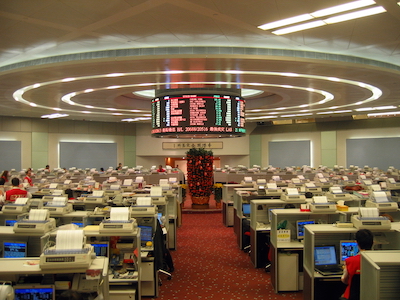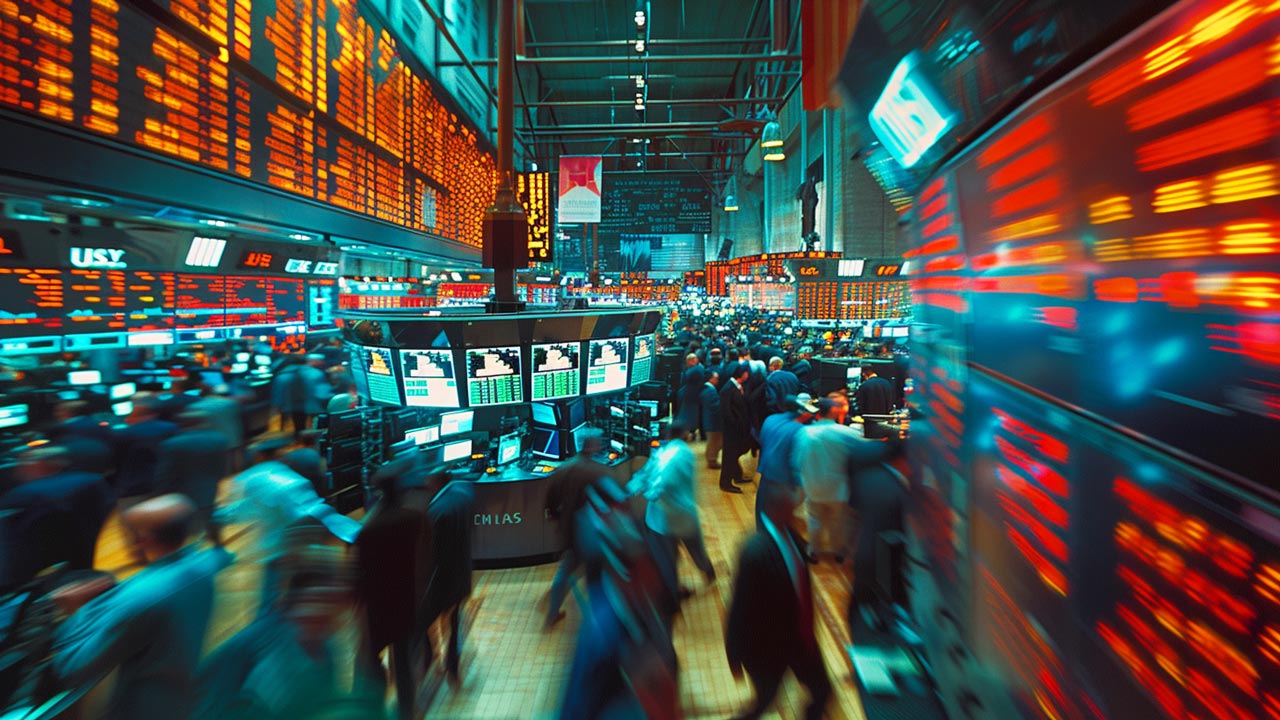China Finally Stops Fighting the Stock Market
China’s gold demand has exploded in the last few years as the Chinese government continued to liberalize its domestic gold market. Last year, foreign banks were given gold import licenses for the first time, and China opened a handful of new gold exchanges. However, China’s economic evolution stretches well beyond precious metals, as the West has seen in the recent boom in Chinese stock markets.
The financial media insists that Chinese stocks are in bubble territory and that Chinese economic growth of 7% is “disappointing.” In a new commentary from Euro Pacific Capital, Peter Schiff explains why the mainstream analysis is shortsighted when one looks at the history of the Hong Kong and Shanghai stock exchanges. Peter argues that with recent regulatory changes, Chinese markets have far stronger fundamentals than those in the West.
China Finally Stops Fighting the Stock Market
By Peter Schiff
Although China’s economy has been leading the world in annualized growth since the days that mobile phones had retractable antennas, there have always been some aspects of the country’s commercial and financial system that loudly broadcast the underlying illogic of a Communist Party’s firm control of burgeoning capitalism. China’s stock markets were one such venue where things just didn’t add up…literally.

In recent days, the stock market in Hong Kong has rocketed upward, notching the kinds of gains that have inspired many market observers to warn of a dangerous bubble forming. But as we see it, the rise is not the result of an unfounded mania gone wild, but the logical outcome of a deliberate regulatory push from Beijing to allow Chinese markets to function the way markets do in the developed world. In other words, this is not a bubble rally but a move towards normalization.
Until late last year China’s stock markets have been regulated with two very different customer bases in mind, creating two very different price structures. Foreign buyers have been allowed to buy shares on the Hong Kong stock exchange but have been prohibited from buying on the Shanghai exchange. On the other hand, domestic Chinese buyers were prohibited from buying in Hong Kong, but could buy in Shanghai. This meant that the two markets were subject to very different supply and demand dynamics, and very different price trajectories.
Foreign interest was subject to a variety of inputs that did not concern local investors: The strength of overseas markets and economies, the global interest rate environment, opinions about the strength of the Chinese economy, the foreign exchange market, and countless other factors. Chinese buyers were more influenced by the domestic economy, financial regulatory incentives, the local real estate market (which for many years was the investment of choice for the growing middle class), and the movements in gold (another popular investment alternative for rank and file Chinese). This created a tale of two markets, with performance of the Shanghai and Hong Kong markets diverging wildly over the years. The dynamic was most easily observed in the relative valuations of companies that listed themselves in both markets. These dual-listed companies were often assigned one valuation in Shanghai and a very different valuation in Hong Kong. Normally such gaps would create an “arbitrage” opportunity for investors to close the gap. But the strict financial regulations in China prevented such normalization. That is until recently.
For much of the early years of the last decade, when the Chinese economy was in the midst of a spectacular wave of growth, and many Chinese citizens began to buy stocks for the first time, much of the outsized appreciation occurred in Shanghai. By 2007, dual-listed stocks traded at a premium in Shanghai over Hong Kong. But the market crash of 2008 hit Shanghai shares far harder. Perhaps disillusioned by the losses, or perhaps attracted to opportunities in the property market, Chinese investors pulled out, sending Shanghai into a seven-year bear market. Over that time, Hong Kong largely held steady, and so by 2014 dual-listed companies traded at a significant premium there.
However, even with the relative strength of Hong Kong, Chinese market performance over the last seven years has been dismal in comparison to the West, even though Chinese economic growth continues at a rate that far surpasses the developed world. For example, the United States has seen its stock market double in the years since the depths of 2009, while delivering average annual GDP growth of just under 1.2%.
In many ways the performance of financial markets has seemed to eclipse the health of the underlying economy as the true test of global leadership. With this sore spot in mind, the new regime of Chinese leaders that took position in 2013 and 2014, led by General Secretary Xi Jinping and Premiere Li Keqiang, seemed determined to take energetic action to level the financial playing field between East and West.
The most significant change they have implemented thus far has been the Shanghai-Hong Kong Stock Connect, which takes major steps to open up the barriers that have segregated China’s market structure. The provisions will greatly increase the ability for Chinese to buy in Hong Kong and for foreigners to buy in Shanghai. The reforms also change banking regulations and interest rate structures in a way that should incentivize Chinese citizens to take savings out of the bank and invest in shares. It is hoped that these moves will finally give China a stock market that mirrors its economy.
The reforms seemed to have had their intended effect. Beginning late last year, China’s investor class finally began embracing shares, pulling the Shanghai market out of its seven-year dive. The exchange powered up 90% in just six months. Clearly, the action is getting a little frothy. It has been reported that in March alone, Chinese investors opened more than 4.8 million stock trading accounts, a boom of historic proportions. The pace has kept up, with an additional 1.5 million accounts opened in the first week of April (the Chinese government now allows citizens to hold up to 20 separate accounts).
It is assumed that the new interest in shares has been helped by a slowdown in Chinese residential real estate, which had come to be the single greatest focus of the typical Chinese investment portfolio. Having cashed out of property (and to a lesser extent gold), many Chinese turned their attention to the beaten down Shanghai exchange.
At the end of the recent rally, Shanghai shares traded over 16 times earnings, a premium to the Hong Kong Index, which traded at just over 13 times earnings. When the Connect program finally allowed the Chinese into Hong Kong late last month, many Chinese finally jumped in to close this arbitrage, sending Hong Kong up to a seven-year high, finally eclipsing the pre-crash high. (In contrast, the S&P 500 is currently 35% higher than its pre-crash high.) The Hang Seng in Hong Kong rose a blistering 15% in the month between mid-March and mid-April. In this sense, it should be clear that Main Street Chinese investors are finally holding the whip, not the hot foreign money that had been the primary river of Hong Kong performance in years past.
Many have speculated that this current mania is a dangerous flash in the pan that will burn investors who arrive late to what they believe will be a short-lived party. But it’s important to realize two things that should give the rally legs. One is regulatory and the other fundamental.
While the Connect laws have greatly liberalized the ability to buy stocks anywhere in China (which by law must now be settled in RMB), a quota system remains in place to keep the lid on purchases. At present, evidence suggests that the bottleneck has kept the pace below where it would be in an unrestricted market. So far, the maximum quota has been hit every day since the Connect regulations went into effect that allow the Chinese to buy in Hong Kong. This suggests that the demand from Chinese investors has only just begun to be realized. Hong Kong should stay strong as long as it’s being pulled upward by a surging Shanghai.
While Western news outlets loudly proclaim the “death rattle” of the Chinese economy (which appears set to slip below 7% – my God how awful!), it is important to realize just how superior that growth rate remains above the moribund West. In China, 7% is described as anemic, whereas in the U.S. 3% is described as booming (although 3% growth in America is looking to be increasingly unlikely). Even if the Chinese markets, which still have plenty of catch-up to do with the West, can capture a portion of this strength, investors could be rewarded for years to come.
The moves also show how the markets in China have been hindered by regulation. The removal of these barriers has revealed hidden strengths. In contrast, U.S. markets have been helped by robust Fed policies designed to keep money flowing into stocks at all costs. Remove these pro-stock monetary incentives, and the possible crash here in the U.S. could become the opposite of the current rally in China.
Get Peter Schiff’s latest gold market analysis – click here – for a free subscription to his exclusive weekly email updates.
Interested in learning more about physical gold and silver?
Call 1-888-GOLD-160 and speak with a Precious Metals Specialist today!



 Whenever an election year rolls around, domestic manufacturing becomes a more central theme of discussion. Candidates from both sides, who seem to disagree on almost everything else, never waver in their commitment to auto manufacturers in Detroit and the steel industry. Republicans and Democrats never forget to remind the American public that they will try […]
Whenever an election year rolls around, domestic manufacturing becomes a more central theme of discussion. Candidates from both sides, who seem to disagree on almost everything else, never waver in their commitment to auto manufacturers in Detroit and the steel industry. Republicans and Democrats never forget to remind the American public that they will try […] The wizards at the Fed and US Treasury have been forced to acknowledge that their “transitory,” inflation is, in fact, quite “sticky.” And with the inflation elephant now acknowledged by the circus of high finance, Treasury yields keep inching up, recently reaching 4.7% — the highest since November. The Fed is stuck: It needs to raise interest rates to tame inflation and […]
The wizards at the Fed and US Treasury have been forced to acknowledge that their “transitory,” inflation is, in fact, quite “sticky.” And with the inflation elephant now acknowledged by the circus of high finance, Treasury yields keep inching up, recently reaching 4.7% — the highest since November. The Fed is stuck: It needs to raise interest rates to tame inflation and […] The solution to a problem shouldn’t make the problem worse. But apparently, California’s policy makers missed that memo. On April 1st, the state instituted a $20 minimum wage for fast food workers, the highest in the US. With California’s absurdly high cost of living, the policy appeared to make life more manageable for low-income residents. Unfortunately, as the adage goes, “If it sounds too […]
The solution to a problem shouldn’t make the problem worse. But apparently, California’s policy makers missed that memo. On April 1st, the state instituted a $20 minimum wage for fast food workers, the highest in the US. With California’s absurdly high cost of living, the policy appeared to make life more manageable for low-income residents. Unfortunately, as the adage goes, “If it sounds too […] The monetary battle of the 20th century was gold vs. fiat. But the monetary battle of the 21st century will be gold vs. bitcoin. With Wall Street jumping into the game with bitcoin ETFs, a bitcoin halving recently splitting the block reward for miners in half, and both gold and bitcoin hovering near their all-time highs, it’s a great time for […]
The monetary battle of the 20th century was gold vs. fiat. But the monetary battle of the 21st century will be gold vs. bitcoin. With Wall Street jumping into the game with bitcoin ETFs, a bitcoin halving recently splitting the block reward for miners in half, and both gold and bitcoin hovering near their all-time highs, it’s a great time for […] What is Nvidia? If you’re a committed gamer the question may sound like nonsense. Nvidia, which was founded in 1993, is a tech company that makes GPUs and other products. It originally specialized in making products for the video game industry, that assisted in 3D rendering. If you were a committed gamer, you probably owned their products. If you weren’t, you might not have heard of them.
What is Nvidia? If you’re a committed gamer the question may sound like nonsense. Nvidia, which was founded in 1993, is a tech company that makes GPUs and other products. It originally specialized in making products for the video game industry, that assisted in 3D rendering. If you were a committed gamer, you probably owned their products. If you weren’t, you might not have heard of them.
Leave a Reply